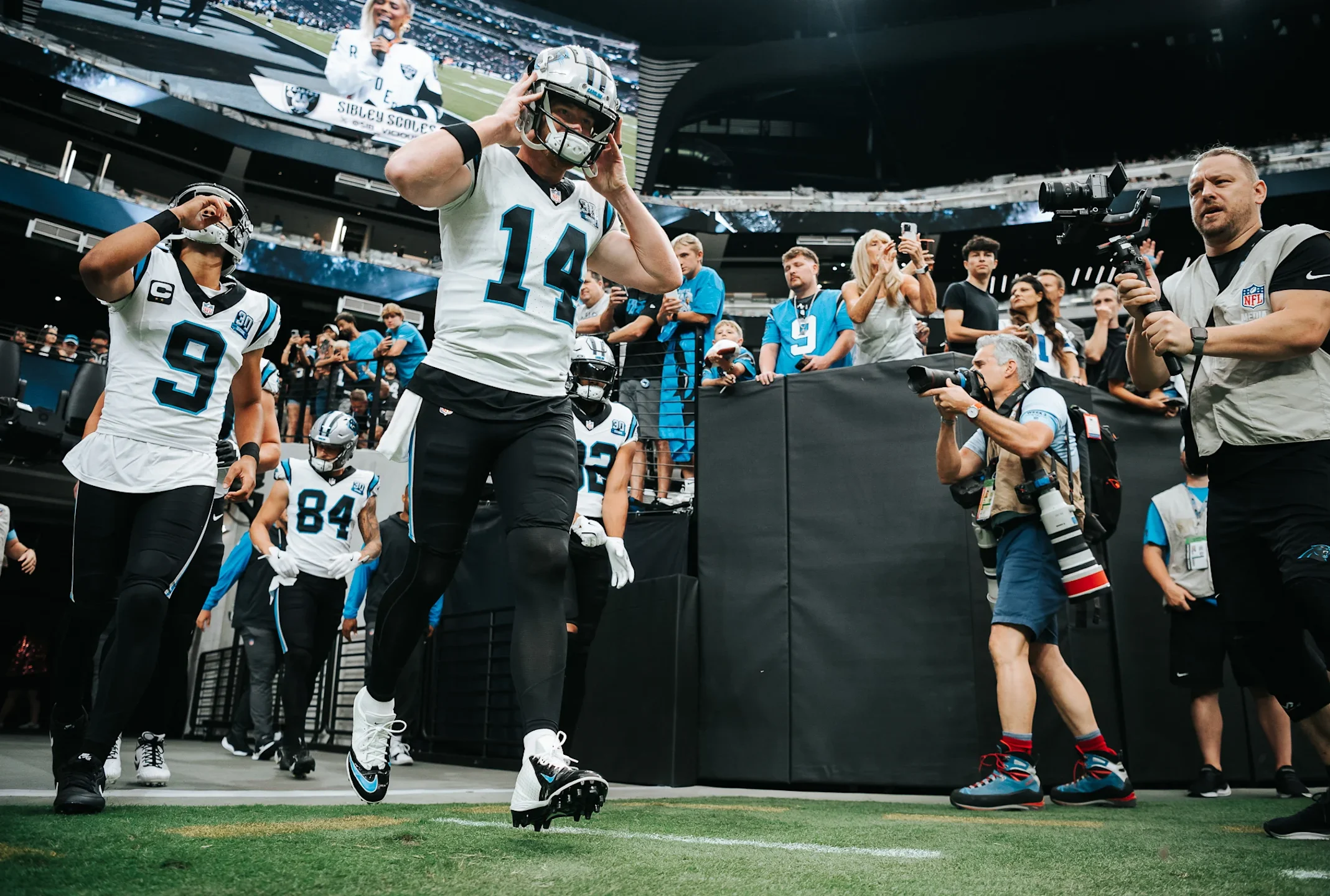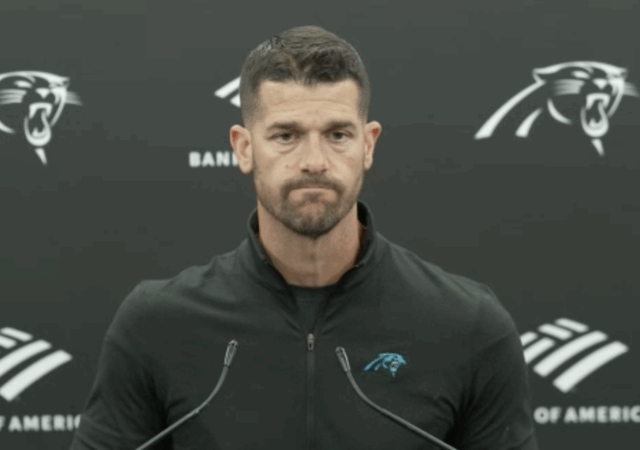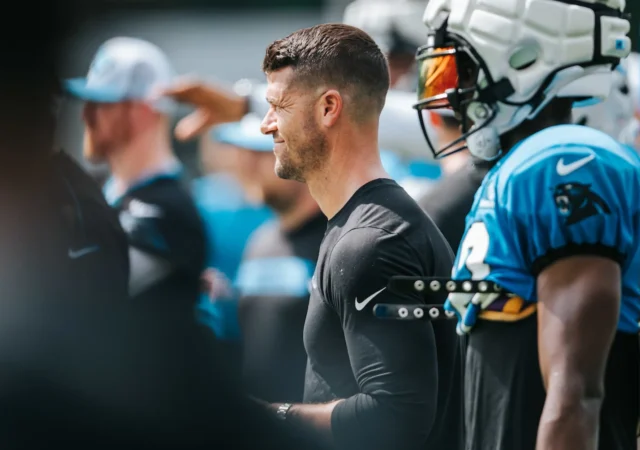After The Carolina Panthers’ cathartic 36-22 upset of the Las Vegas Raiders on Sunday, Future’s Plutoski bounced off the walls of Allegiant Stadium’s visitor locker room. For this moment, some vintage Jay-Z would’ve been more apropos since Andy Dalton had the blueprint.
“I show you how to do this, son!”
Dalton took the same offense that Bryce Young struggled with and balled out. He threw for 319 yards, three touchdowns and no interceptions. The Panthers had two players over 100 scrimmage yards. Chubba Hubbard ran for 114 yards, while Diontae Johnson caught eight passes for 122 yards and a touchdown.
While it was one game and against a Raiders’ pass defense that’s ranked 24th in the league, Sunday’s performance proves that Young needed to sit and it may be the best thing to happen to him.
The process of development and progression isn’t smooth and linear, especially not as a quarterback in the NFL. The process is often a jagged path riddled with its fair share of curves and potholes. Some paths are more adversarial than others.
It’s a misconception that a player can instantly come into the league, get ridiculous numbers, and pick up where he left off in college. It doesn’t work that way. There are truly levels to not only surviving in the league but also to be successful, and in knowing this I believe that rookie quarterbacks should sit and observe a few games before throwing him out there. Doing this will alleviate the pressure to perform immediately and give him time, space, and opportunity to learn and absorb the nuances of the position at this level.
In drafting these quarterbacks, I believe franchises should already have the essentials in place. The four pillars for a young quarterback are:
An offensive line. Having a stout o-line gives the quarterback assurance and more opportunity to develop or improve pocket awareness. It gives time to scan through the options and progression. Most importantly, keeps them upright and from getting knocked into the middle of next week.
A tight end. Wideouts are a given, but a big, catching tight end gives the quarterback a safety valve, especially in short-yardage situations.
A running back. In a passing-driven league, the run game still matters. Having a back that can establish the run takes the pressure off of the young quarterback to make the plays. Having a back that can catch out of the backfield is also a bonus.
A stout defense. A formidable defense provides extra possessions, which leads to more opportunities for a young quarterback to get run.
To Dan Morgan’s credit, he invested in o-line help and drafted a tight end. He and the Panthers’ front office are trying to fix it while trying to win. Intervening and having Young sit is the best possible option here.
Given the situation that Young was drafted in, there’s an opportunity for him to turn it around. It starts with him observing Dalton. Absorbing what he’s saying. Staying in that iPad full of plays and watching film. That’s where he would find places where the game slows down. When that happens, Young would look different. He’d be more comfortable in the pocket and his awareness will improve. He’d have confidence, because he’d have a better grasp of the offense.
That’s how you do this, son.




A Massacre In Foxboro: Panthers Lose In A Rout Vs Patriots